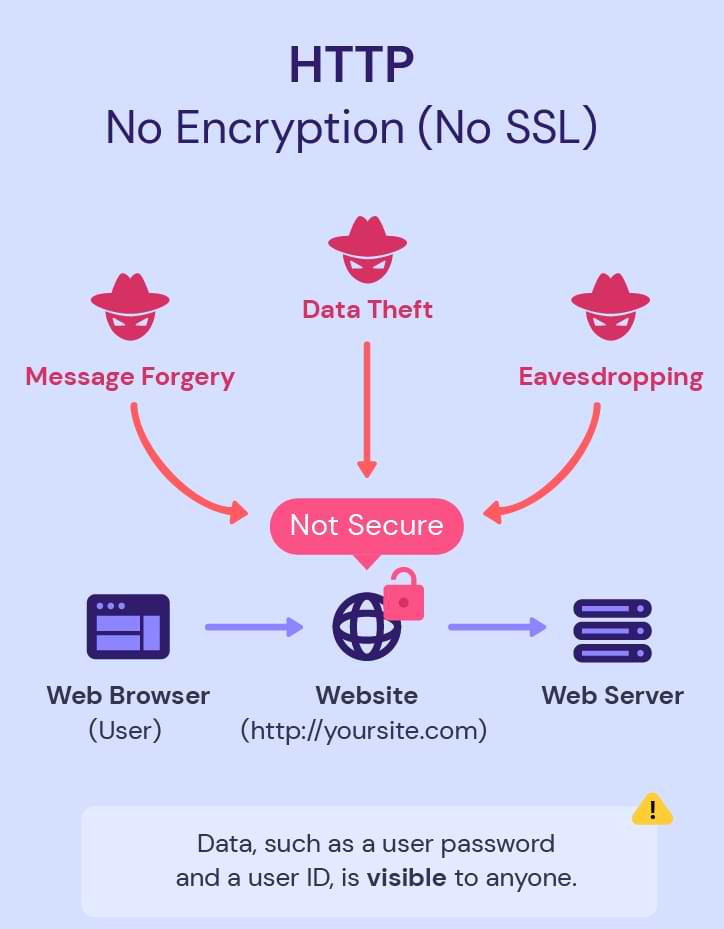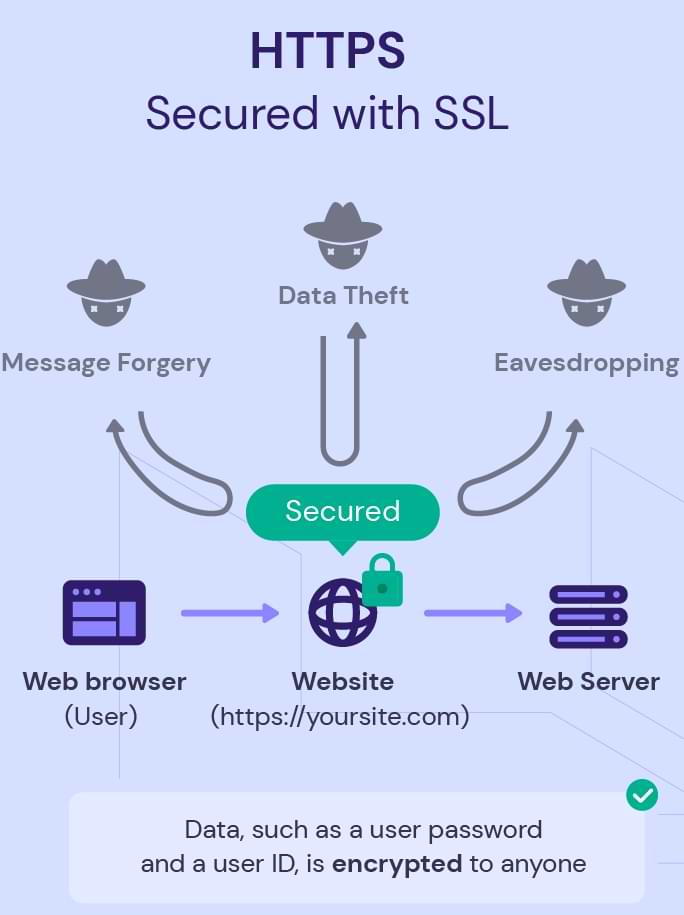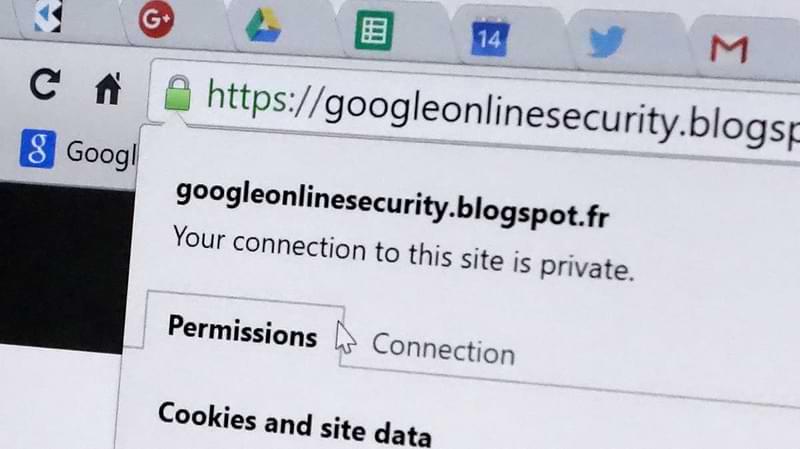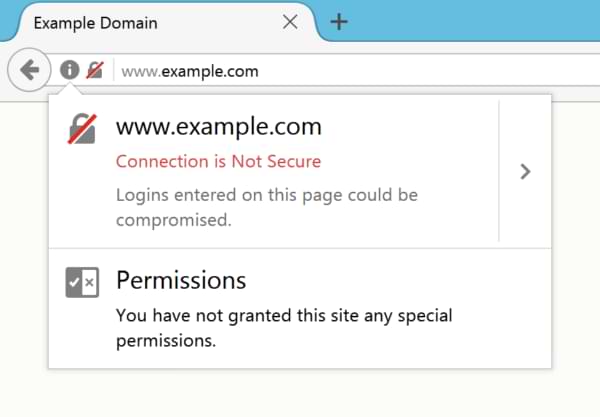If you have ever visited a website that starts with https://, you may have noticed a padlock icon in your browser’s address bar. This indicates that the website is using HTTPS, a secure version of the HTTP protocol that encrypts the data between your browser and the web server.
But what exactly is HTTPS and why is it important for web security?
In this article, we will explain what HTTPS is, how it works, what are its benefits, and how to enable it on your website.
We will also show you how HTTPS can improve your SEO and user experience. By the end of this article, you will have a better understanding of web security fundamentals and how to protect your website and visitors with HTTPS.
What is HTTPS and why is it important for web security?
HTTPS stands for Hypertext Transfer Protocol Secure 1 2. It is the secure version of HTTP, which is the primary protocol used to send data between a web browser and a website 1. HTTPS is encrypted in order to increase security of data transfer 1 2.
How does HTTPS work and what are its benefits?
HTTPS works by using an encryption protocol called Transport Layer Security (TLS) 1, formerly known as Secure Sockets Layer (SSL) 1. This protocol secures communications by using what’s known as an asymmetric public key infrastructure1. This means that two keys are used to encrypt and decrypt data: a public key that anyone can access, and a private key that only the owner of the website has 3.
The benefits of HTTPS are:
- It protects the privacy and integrity of data exchanged between the browser and the website³.
- It prevents hackers from intercepting, modifying, or stealing sensitive information such as passwords, credit card numbers, or personal details³.
- It authenticates the identity of the website owner and ensures that you are connected with the intended server⁴⁵.
- It improves your website’s ranking on search engines like Google, which favor secure sites over insecure ones⁴.
What are TLS/SSL certificates and how do they enable HTTPS?
To enable HTTPS on your website, you need to obtain and install TLS/SSL certificates 3. These are digital documents that contain information about your website’s identity and public key 3. They are issued by trusted third parties called certificate authorities (CAs) who verify your ownership and validity of your domain name 3.
How to obtain and install TLS/SSL certificates for your website?
To obtain a TLS/SSL certificate for your website, you need to:
- Choose a CA that suits your needs and budget. There are different types of certificates with different levels of validation and features. Some examples are DigiCert, Let’s Encrypt, Cloudflare SSL etc.
- Generate a certificate signing request (CSR) on your web server. This is a file that contains your domain name and public key.
- Submit your CSR to the CA along with some proof of identity and ownership.
- Receive your certificate from the CA after they validate your request.
- Install your certificate on your web server according to its instructions.
How to test and troubleshoot HTTPS on your website?
To test and troubleshoot HTTPS on your website, you can:
- Use online tools such as SSL Labs Server Test or Why No Padlock? to check if your certificate is valid, configured correctly, and compatible with various browsers.
- Use Chrome DevTools or Firefox Developer Tools to inspect network requests and responses for any errors or warnings related to HTTPS.
- Use browser extensions such as HTTPS Everywhere or Smart HTTPS to force HTTPS connections on all websites.
Here are some examples of how HTTPS works:
This is how HTTP works without encryption. Anyone can see or modify the data sent between the user’s browser and the website’s server.

This is how HTTPS works with encryption. Only the user’s browser and the website’s server can see or modify the data sent between them.

Here are some screenshots of how browsers indicate if a site’s connection is secure:
This is how Chrome indicates a secure site with a lock icon.

This is how Firefox indicates an insecure site with a warning icon.

Here are some code snippets of how to generate a CSR on different web servers:
openssl req -new -newkey rsa:2048 -nodes -keyout /etc/httpd/conf/example.key -out /etc/httpd/conf/example.csr
On Nginx
openssl req -new -newkey rsa:2048 -nodes -keyout example.key -out example.cCheck this video for a more in-depth understanding of https works from renowned expert in the industry:
Final words
In this article, we have learned what HTTPS is and why it is essential for web security. We have seen how HTTPS works and what are its benefits for both website owners and visitors.
👌We have also learned what are TLS/SSL certificates and how to obtain and install them for your website.
👌We have also discussed how to test and troubleshoot HTTPS on your website and how to optimize your website for speed and accessibility.
👌Finally, we have shown you how HTTPS can improve your SEO and user experience by increasing trust, ranking, and performance.
If you have any further questions or feedbacks please let me know.
I hope this article helps you understand HTTPS better and the importance of web security fundamentals. Also, how to implement HTTPS on your website. If you have any questions or feedback, please feel free to leave a comment below or contact us via email.





